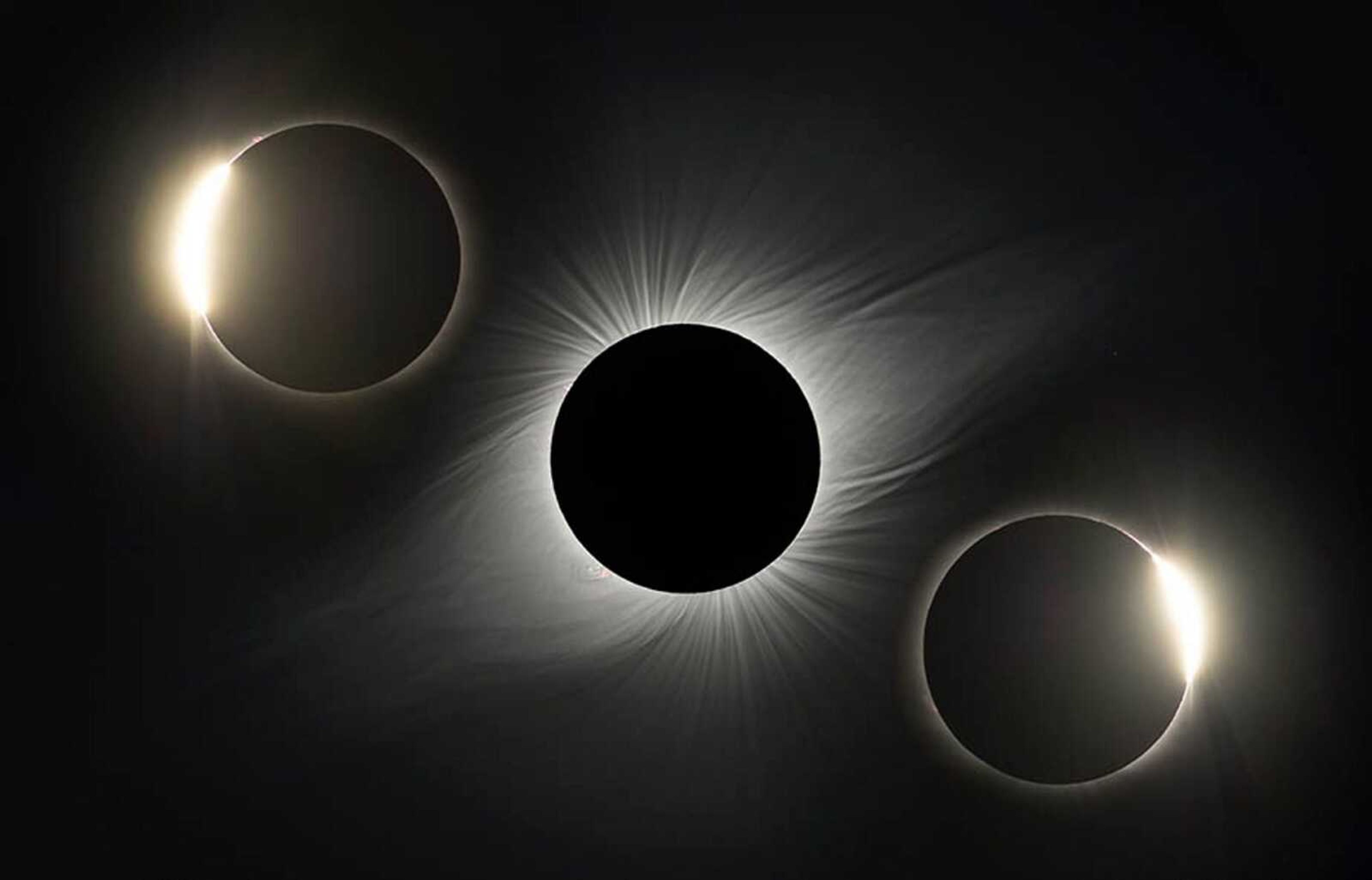Experts advise eclipse watchers next year should have plan B
The weather on the day of total solar eclipse taking place Monday, April 8, shows a 60% chance of the skies over Cape Girardeau being partly cloudy to cloudy. For this reason, experts speaking during the Missouri Solar Eclipse Expo panel discussion Friday, July 21, advised having an alternate viewing location planned just in case the weather looks to spoil the view...
The weather on the day of total solar eclipse taking place Monday, April 8, shows a 60% chance of the skies over Cape Girardeau being partly cloudy to cloudy.
For this reason, experts speaking during the Missouri Solar Eclipse Expo panel discussion Friday, July 21, advised having an alternate viewing location planned just in case the weather looks to spoil the view.
Brian Alworth, a meteorologist with KFVS12, said he looked back at the last 40 years of climate data in the Cape Girardeau area. He said 30% of the time April 8 was completely overcast, 30% it was partly cloudy, and 30% it was clear skies and sunny.
"For April in this part of the country, the weather is extremely variable," Alworth said. "We're transitioning from winter to spring, so in early April it can be cloudy, rainy and we've even seen snow on some occasions."
Alworth also noted another "wild card" is that the weather is moving into an El Nino pattern, which brings more storms to the region.
"The National Weather Service long-range forecasters just put out a new outlook for March, April and May, and it has a big precipitation bull's-eye right over the mid-Mississippi Valley," Alworth said. "I don't want to be a doom-and-gloom guy, but I'm saying be realistic."
Fred Espanek, a retired astrophysicist from NASA's Goddard Space Flight Center, also known as "Mr. Eclipse", said this is a good reason people hoping to view the eclipse need to have a "plan B". He advised, several days in advance of April 8, keeping an eye on the forecast for Cape Girardeau and even "a couple hundred miles north or south" within the eclipse's path of totality.
Espanek suggested keeping vehicles stocked with food and drink and, if the forecast does not look good, be ready to drive to a location showing better eclipse viewing weather.
A total solar eclipse is when the moon passes between the Earth and the sun, casting the moon's shadow onto the Earth. That shadow can be 50 to 100 miles wide and, in the U.S. in 2024, will travel on a northeastern path from Texas to Maine. The only way to see the total eclipse is to be within that "path of totality."
Cape Girardeau will be within that path for more than four minutes beginning at approximately 2 p.m. Espanek said even if the sky is cloudy, people should "stick it out" because "four minutes is longer than you think" and the weather could shift.
"Don't give up. Don't go inside and take a nap," Espanek said. "Stay outside, keep looking up just in case a miracle happens."
During totality, Espanek said the temperature can cool 10 to 15 degrees and the light will dim dramatically, "like a curtain is being drawn over the whole environment."
Espanek said the moment eclipse viewers look forward to most is when the edge of the sun and moon are just about to meet. He said that is when the sun's corona will appear to be a ring around the moon and there will be one "bead" of sunlight along the edge creating what is known as the "Diamond Ring" effect.
"This only lasts about five seconds and is a little tricky to look at because you've got your eclipse sunglasses on and you don't want to take them off too soon," Espanek said. "But if you don't take them off soon enough you miss the diamond ring effect."
Espanek said it is fine to take a quick peek at that moment. He said it's not any more dangerous to look at the sun during an eclipse than it is on any other normal day of the year.
"We've all taken a quick peek at the sun without going blind," Espanek said. "The difference is human nature makes us want to stare at the sun longer than we should during an eclipse. Use common sense. If it looks like it's too bright, stop looking."
All the panelists agreed it is worth making a trip of several hundred miles to see the 2024 eclipse while it is in totality.
"It's the coolest thing you will ever see," said Charles Fulco, a NASA Solar System ambassador and eclipse chaser.
Espanek said, after 2024, the next solar eclipse will happen in 2045, and the next time Cape Girardeau will be in a solar eclipse's path of totality won't be until 2343. Cape Girardeau was recently in the path of totality in 2017, however, Espanek said it was "extremely rare" to have two total solar eclipses so close together in time and location.
Connect with the Southeast Missourian Newsroom:
For corrections to this story or other insights for the editor, click here. To submit a letter to the editor, click here. To learn about the Southeast Missourian’s AI Policy, click here.








